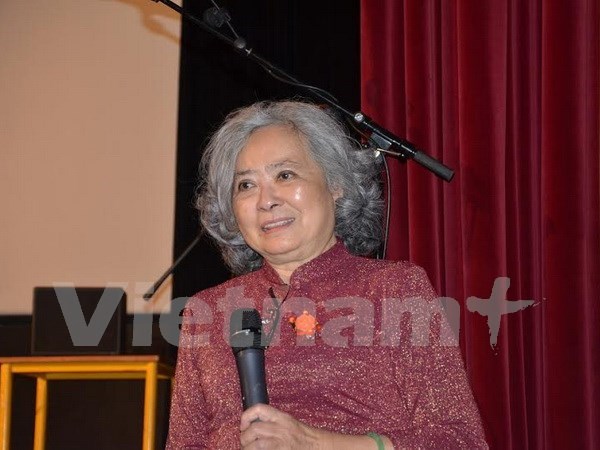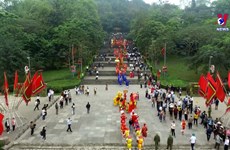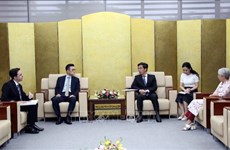Plaintiff lawyers in French AO lawsuit determined to follow case
Plaintiff lawyers in the lawsuit against 26 US chemical companies over their supply of chemical toxins used during the Vietnam War have expressed their firm determination to follow the case.
 Tran To Nga in a talk about AO/Dioxin aftereffect. (Photo: VNA)
Tran To Nga in a talk about AO/Dioxin aftereffect. (Photo: VNA)Plaintiff lawyers in the lawsuit against 26 US chemical companies over their supply of chemical toxins used during the Vietnam War have expressed their firm determination to follow the case, though it could last 20 years or longer.
Lawyers Amelie Lefebvre and Bertrand Repold from the Paris-based William Bourdon Forestier law firm, which represented Vietnamese-French Agent Orange/dioxin victim Tran To Nga, told the Vietnam News Agency in an interview as part of a press briefing in Ho Chi Minh City on August 1.
Repold informed the latest developments of the case, saying that during the June 18 court hearing, five lawyers representing the defendants argued that the plaintiff lacked documentation and needed to provide supplements before the next hearing.
At the recent request of the court, several US chemical firms sent written replies that only mention issues relating to the documents instead of their responsibility for manufacturing and providing chemical toxins during the war, causing serious consequences in Vietnam.
Repold described it as a tactic to delay the process and squeeze Nga’s health and budget.
Lefebvre, for her part, stated that they have prepared legal and scientific evidence for the case over the past five years and the paper-related incident during the hearing does not discourage them.
She also called on the lawyers of the defendants to travel to Vietnam to witness the daily miseries suffered by AO/dioxin victims who will be the live witnesses in this legitimate case.
Asked about why William Bourdon Forestier agreed to defend Nga pro bono, Repold said Nga holds French citizenship, making it easier for them to sue US chemicals firms at the French court.
The case is a legal fight for justice, not only for Nga but also other Vietnamese AO victims who are suffering from diseases and birth deformities passed down from generation to generation, he said, adding that seeing the strong will of AO victims at the Hanoi’s Friendship Children Village has inspired them to bring the case to court as soon as possible.
It is a tough and complex case involving many people from Vietnam, France and the US, said Lefvebvre, forecasting that the first defence session could begin in late 2016 or early 2017.
She also said it is an opportunity to seek justice for millions of Vietnamese AO victims and get the US and international community wake up to this historic human issue.
Lefvebvre said that though what lies ahead is uncertain, she and the other lawyers have strong confidence in the ultimate victory of the case thanks to the support of the Vietnamese people and the world, he said.
In May 2014, Vietnamese-French Tran Thi To Nga, born in 1942, filed a lawsuit against 26 US chemical firms for producing chemical toxins sprayed by the US army in the war in Vietnam, causing serious consequences for the community, her and her children.
Tran To Nga graduated from a Hanoi university in 1966 and became a war correspondent of the Liberation News Agency. She worked in some of the most heavily AO/Dioxin affected areas in southern Vietnam such as Cu Chi, Ben Cat and along the Ho Chi Minh Trail, ultimately experiencing contamination effects herself.
Among her three children, the first child died of heart defects and the second suffers from a blood disease.
In 2009, Nga, who contracted a number of acute diseases, appeared as a witness at the Court of Public Opinion in Paris, France against the US chemical companies.
The complaint and related documents were handed over to the Crown Court of Evry city in the suburb of Paris.
From 1961-1971, US troops sprayed more than 80 million litres of herbicides—44 million litres of which were AO, containing nearly 370 kilograms of dioxin—over southern Vietnam.
As a result, around 4.8 million Vietnamese were exposed to the toxic chemical. Many of the victims have died, while millions of their descendants are living with deformities and diseases as a direct result of the chemical’s effects.-VNA













